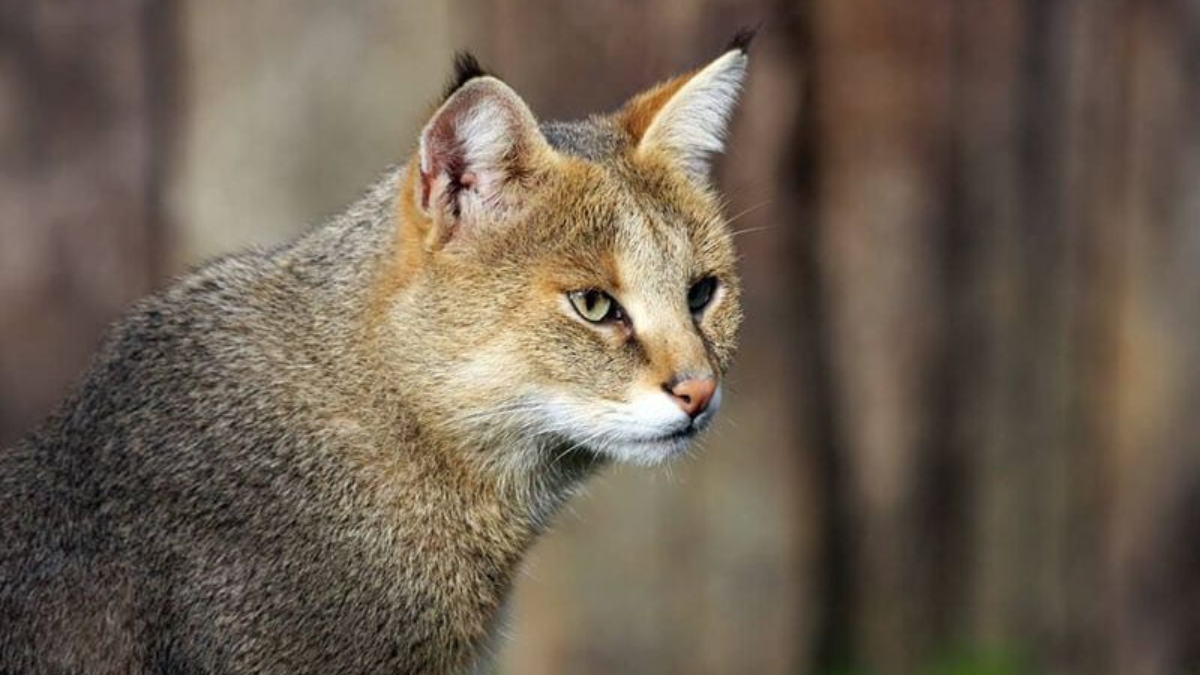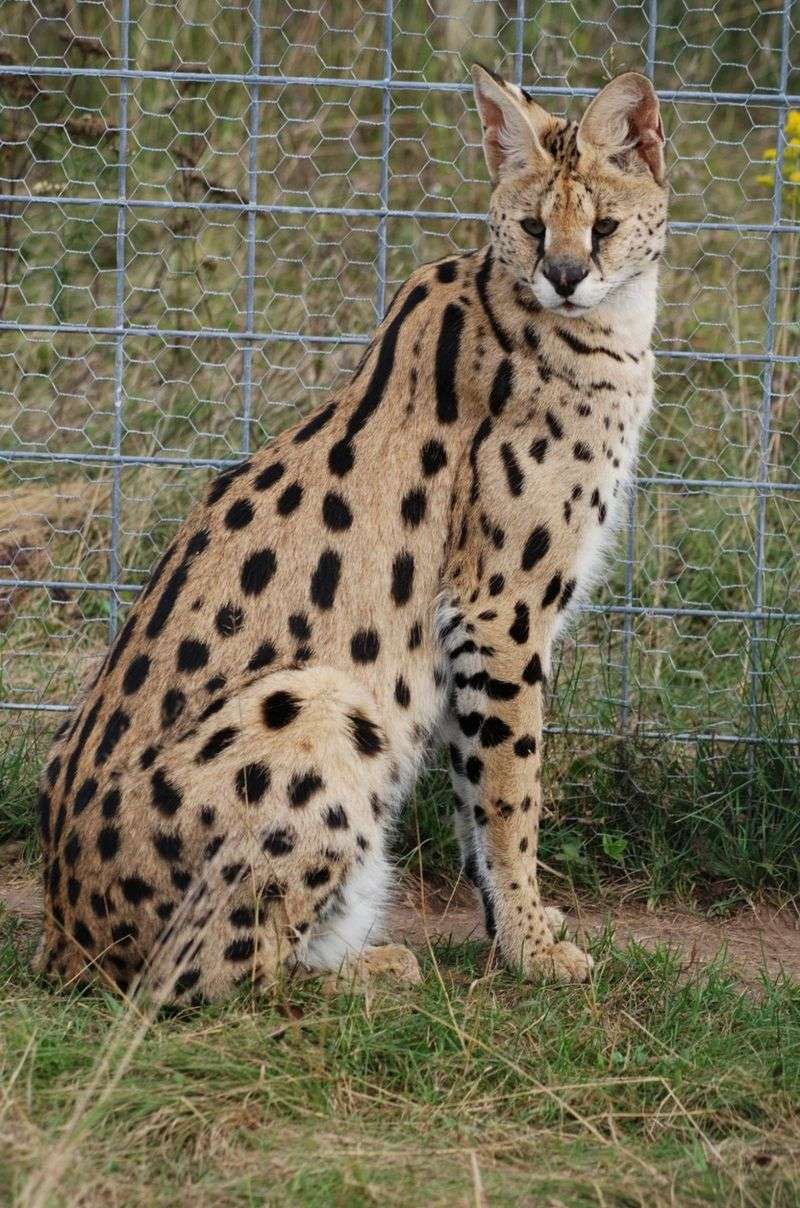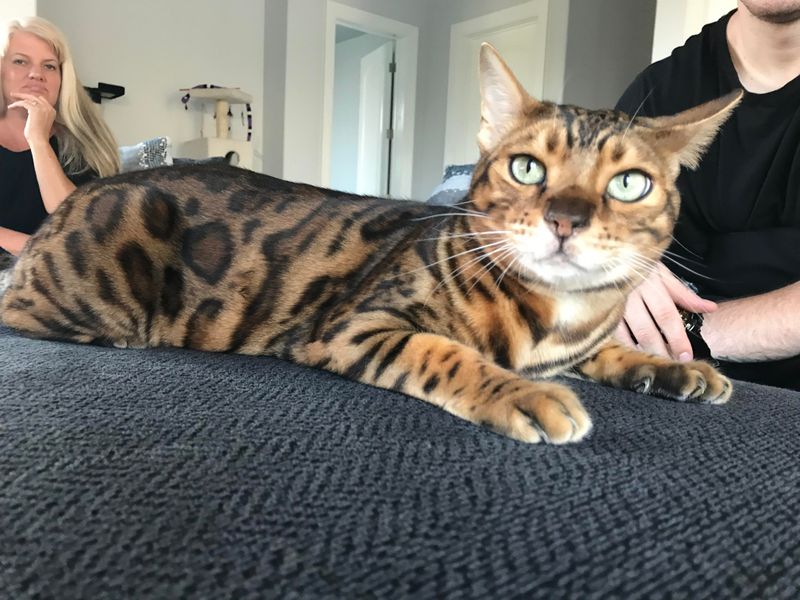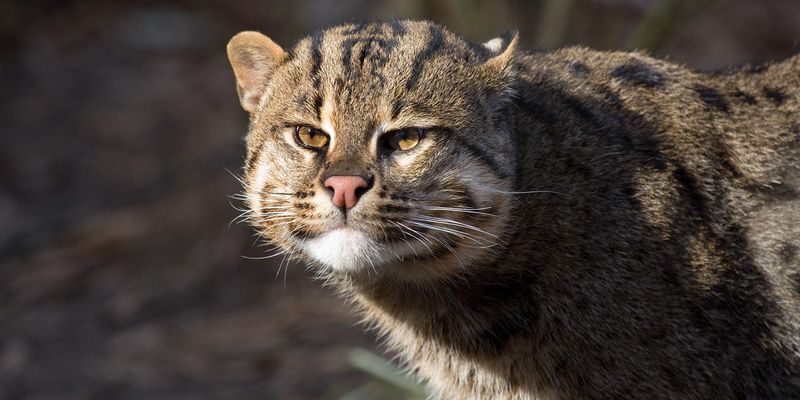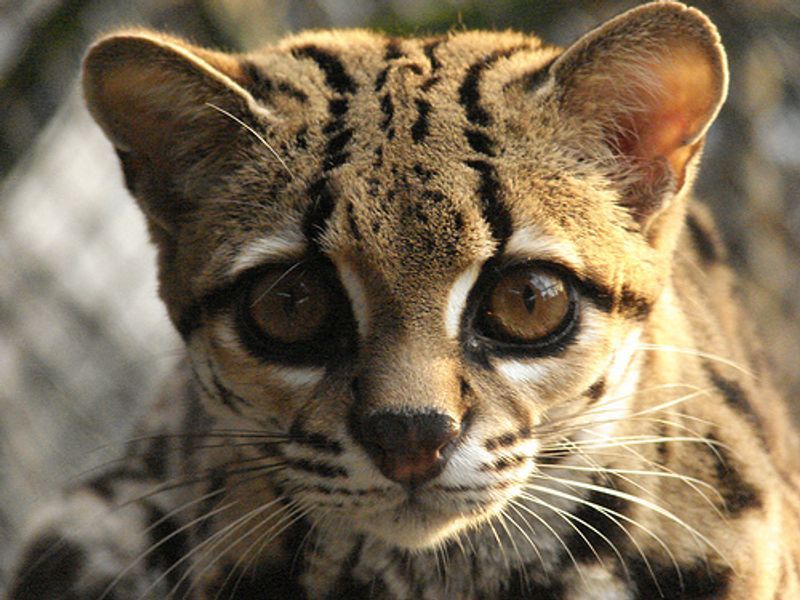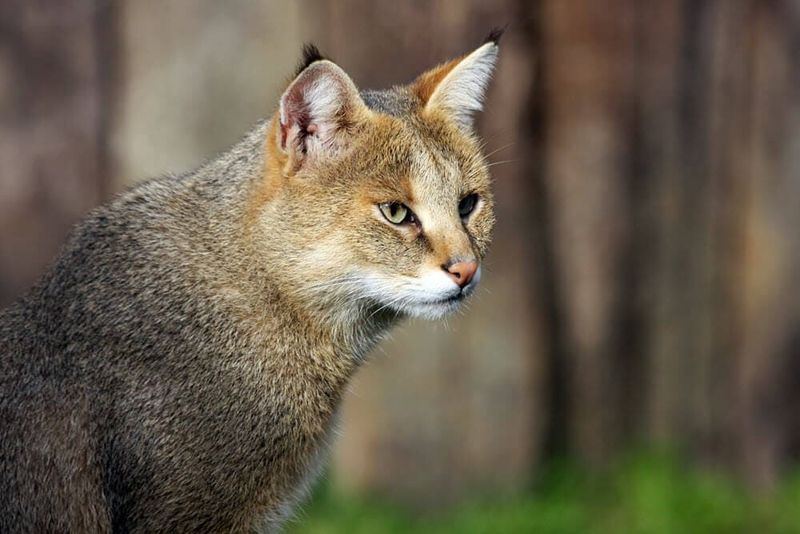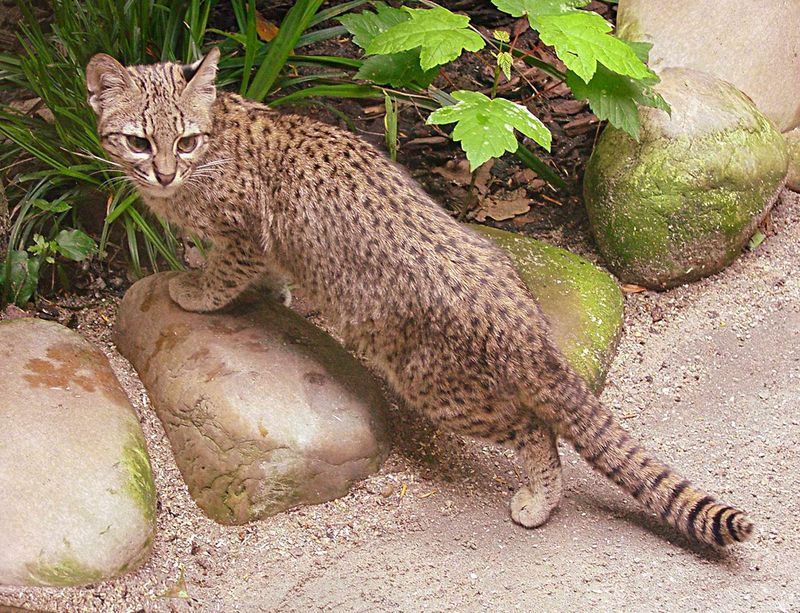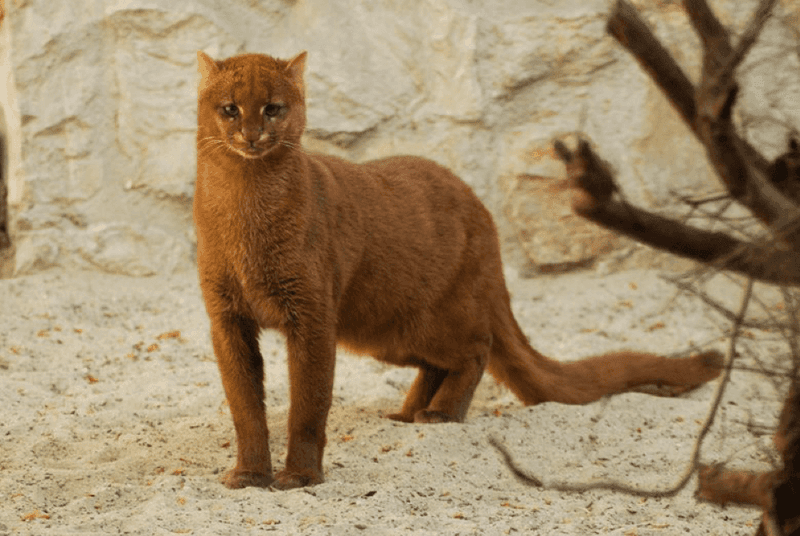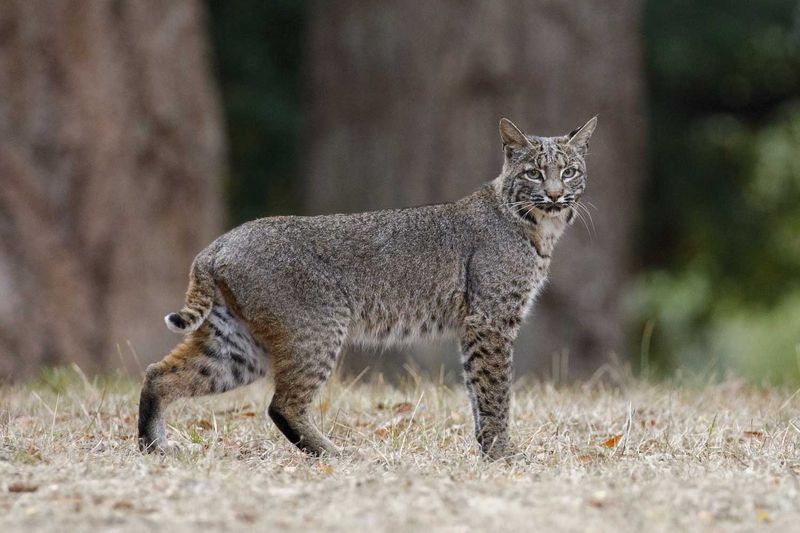📖 Table of Content:
Some wild cats bear a striking resemblance to domestic cats, with similar fur patterns, body shapes, or eye colors. At first glance, it’s easy to mistake them for oversized versions of the familiar house pet. This visual similarity often leads to misconceptions about their nature.
Despite their outward appearance, these wild felines are anything but tame. Equipped with sharp instincts, powerful bodies, and territorial behaviors, they are built for survival in the wild. Unlike domestic cats, they do not adapt well to human environments or companionship.
From stealthy hunters in the jungle to agile climbers in mountain ranges, each of these cats plays a vital role in its ecosystem. Their resemblance to domestic cats masks the reality of their true nature. Beneath the soft fur and feline grace lies a formidable predator.
1. Serval
The African Serval could easily be mistaken for an oversized spotted house cat with extra-long legs. Standing up to 24 inches tall at the shoulder, these golden cats feature black spots and stripes that sometimes resemble certain domestic tabby patterns.
Servals possess incredible hunting abilities, capable of leaping 10 feet in the air to catch birds. Their specialized hearing can detect rodents moving underground!
Despite their occasional appearance in the exotic pet trade, Servals retain strong wild instincts. Their territorial marking involves powerful spraying, and they require specialized diets of whole prey animals—not exactly the behavior you want in your living room.
2. Ocelot
At first glance, ocelots could easily be mistaken for Bengal cats, thanks to their dramatic spotted coats and similar facial features. Many people find themselves confusing these wild hunters with the sleek, designer domestic breeds.
Found throughout South and Central America, ocelots are solitary nocturnal hunters equipped with razor-sharp teeth and claws. They stalk small mammals, reptiles, and birds with deadly precision.
During the 1960s, ocelots became fashion accessories for celebrities, nearly driving them to extinction. Today, they’re protected by law. Their need for large territories (up to 30 square miles per cat) makes them impossible to humanely keep as pets.
3. Fishing Cat
Despite their oversized mackerel tabby appearance, fishing cats come with waterproof fur and distinctive stripes that make them look at home in the wild. Their short tails and stocky builds might fool you into thinking they’re domestic, but their behavior speaks otherwise. These are wild predators, not playful house cats.
Native to wetlands across South and Southeast Asia, these specialized hunters dive completely underwater to catch fish! Their partially webbed feet and dense, water-resistant double coat set them apart from house cats.
Fishing cats face serious conservation threats due to wetland destruction. They possess powerful jaws designed for crushing fish bones and can become aggressive when threatened. Their specialized hunting behaviors and territorial nature make them unsuitable companions for humans.
4. Margay
Margays could easily pass for someone’s exotic house cat with their beautiful spotted coats and large, expressive eyes. Slightly smaller than ocelots, these Central and South American felines weigh just 6-10 pounds—similar to many domestic cats.
Don’t let their adorable appearance trick you. Margays are incredible athletes, able to rotate their ankles 180 degrees to run headfirst down trees. They’re one of the only cats that can hang by one back foot while grabbing prey with front paws!
These forest-dwelling hunters rarely survive in captivity due to specialized dietary needs and stress sensitivity. Their declining wild populations are protected by international law, making ownership illegal in most countries.
5. Jungle Cat
With their sandy-brown coat, jungle cats resemble domestic breeds like Abyssinians or Burmese. Their modest size and lack of bold markings make them seem less like wild hunters and more like household companions. However, their natural instincts tell a very different story.
These adaptable cats range from Egypt through India and Southeast Asia. Unlike many wild felines, jungle cats thrive near human settlements, hunting in agricultural areas and wetlands.
The jungle cat contributed to the creation of the Chausie domestic breed, which explains some physical similarities. However, pure jungle cats remain fully wild with unpredictable temperaments and territorial behaviors. Their powerful build and lightning-fast reflexes make them dangerous when threatened.
6. Geoffroy’s Cat
Resembling miniature domestic tabbies, Geoffroy’s cats have spotted coats and a compact size of 4-8 pounds. These South American natives have round faces and proportions that could easily be mistaken for house cats. Despite their familiar look, these wildcats are skilled hunters, thriving in the wild.
Their cute appearance masks their true nature as efficient hunters. Geoffroy’s cats possess specialized night vision six times more powerful than human eyesight, and can rotate their ears independently to track prey from multiple directions.
Though occasionally kept as exotic pets in the past, these cats mark territory with strong-smelling urine and require extensive environmental enrichment. They’re known to become aggressive without warning when stressed, making them dangerous despite their small size.
7. Jaguarundi
Resembling domestic cats like Burmese or Abyssinians, jaguarundis are sleek, with a uniform coloration of either rusty-red or gray. Their unusual, elongated build and small, rounded ears give them an otter-like appearance, which some might find less threatening. Yet, these wild cats are capable of agile, swift hunting.
Don’t be deceived by their unassuming look. These Central and South American predators are highly athletic, capable of taking down prey larger than themselves. They’re also excellent swimmers and climbers.
Jaguarundis are vocal cats with an impressive repertoire of 13 different calls. Their unpredictable nature and specialized hunting behaviors make them poor candidates for domestication, despite occasional misguided attempts to keep them as pets.
8. Bobcat
With their tufted ears and spotted coats, bobcats can easily be confused with large tabbies or Maine Coons. Their facial markings make them seem like oversized domestic cats. However, their natural instincts and wild lifestyle make them far more than just a house cat in disguise.
These North American natives are surprisingly common even in suburban areas. Despite their moderate size (15-35 pounds), bobcats are powerful predators capable of taking down deer many times their weight through ambush hunting techniques.
Bobcats possess razor-sharp teeth and claws designed for ripping prey. Their territorial nature includes scent-marking behaviors inappropriate for home environments. While occasionally illegally kept as pets, their wild instincts inevitably surface, leading to dangerous situations for owners and unhappy lives for these beautiful predators.
